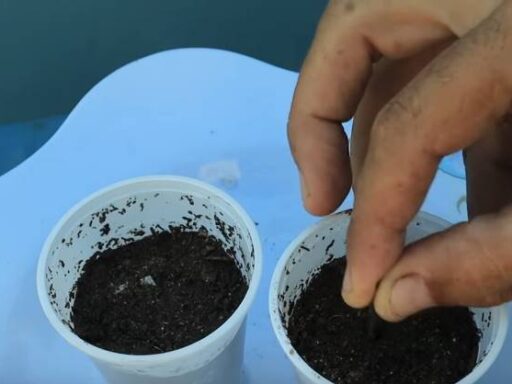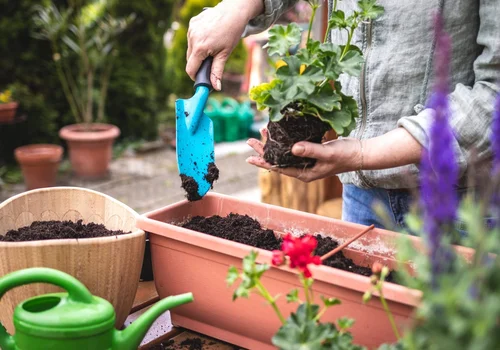Tomatoes are one of the most popular crops in home gardens, but growing them to their full potential requires careful attention, especially in the final stages of growth. This article provides an in-depth guide on how to maximize tomato yield and ensure the best ripening process for a bountiful harvest. We’ll also explore what to do with tomatoes that stubbornly refuse to ripen.
Feeding Your Tomato Plants for Optimal Growth
To grow strong, healthy tomato plants, feeding them the right nutrients is essential. A good-quality tomato feed, particularly one high in potassium, is perfect for this. Potassium promotes fruit formation and ripening, helping your tomatoes to develop fully.

During the summer months, it’s important to feed your plants at least once every two weeks. This step is crucial and should not be skipped if you want to improve the quantity and quality of your fruits. The nutrients provided at this stage will dramatically affect your final yield.
Keeping Tomatoes Warm for Ripening
As your tomatoes grow, temperature management becomes vital for the ripening process. Tomatoes ripened on the vine have the best flavor, and keeping your plants warm will significantly help in this regard. As summer transitions to autumn, it’s important to conserve warmth, especially at night. Consider closing windows, doors, and vents as temperatures drop to keep in as much heat as possible.
If you’ve installed greenhouse shading to protect your plants from the summer sun, now may be the time to remove it. However, check the weather forecast to avoid exposing your plants to any late-season heatwaves.
Greenhouse Maintenance for Tomato Plants
For those growing tomatoes in a greenhouse, regular maintenance is crucial. The greenhouse should allow as much sunlight as possible as the days get cooler. If your greenhouse roof is dirty or shaded by overhanging branches, clean it and cut back any foliage. Maximizing sunlight helps your tomatoes continue to ripen even as the days shorten.
Managing Late Season Tomato Flowers
As summer turns into autumn, typically 6 to 8 weeks before your region’s first expected frost, it’s a good idea to remove any new flowers that appear. Shorter days and cooler temperatures mean that late-season flowers are unlikely to develop into ripe fruit. Removing these flowers allows the plant to concentrate its energy on ripening the existing fruits.
If you live in a warmer climate, you might be able to get away with leaving these flowers on, but in most cases, removing them will result in a more bountiful harvest.
Pruning for Better Tomato Ripening
Pruning your tomato plants is an important part of ensuring the best yield. For cordon or vining tomatoes, pinch out the top of the main stem and any side shoots. This helps stop vegetative growth, allowing the plant to focus on ripening the remaining fruits. Removing any excess foliage also helps direct the plant’s energy toward the ripening process.
When to Harvest Your Tomatoes
Tomatoes generally take around two months to go from flower to fully ripe fruit. However, as days grow shorter and temperatures drop below 55°F (13°C) for much of the day, it’s unlikely that tomatoes will continue to ripen on the vine. At this point, it’s time to harvest the remaining fruits and bring them indoors to finish ripening.
Ripening Tomatoes Off the Vine
If your tomatoes are not fully ripened by the time cooler weather sets in, don’t worry—they can still ripen off the vine. Tomatoes that are light green or have begun to blush (showing hints of color) are likely to ripen indoors. However, darker green tomatoes may not ripen as successfully.
To ripen your tomatoes off the vine, place them in a warm spot, like a countertop or near a bright window. Bananas and apples emit ethylene gas, which speeds up the ripening process. Place one of these fruits with your tomatoes to help them ripen faster. For even better results, enclose the tomatoes and fruit in a paper bag to trap the ethylene gas and enhance its effects.
Make sure to regularly check on your ripening tomatoes and remove any that are ready to avoid over-ripening. Whatever you do, avoid placing your tomatoes in the refrigerator, as cold temperatures will stop the ripening process entirely.
Recipes for Unripe Tomatoes
Sometimes, no matter what you do, you may still end up with a few stubborn green tomatoes that refuse to ripen. Instead of wasting them, there are several delicious ways to enjoy green tomatoes.
One popular recipe is southern fried green tomatoes, a dish that is crunchy on the outside and creamy on the inside. To make this dish, cut your green tomatoes into thick rounds and coat them with seasoned flour, beaten egg, and breadcrumbs or polenta. Fry them in a neutral oil like sunflower or canola oil, and serve with a dipping sauce like mayonnaise mixed with a bit of chili sauce.
Another great option is green tomato salsa, which is quick, fresh, and zesty. Roast the green tomatoes, then mix them with cilantro, red onions, chili, and lime juice for a perfect pairing with tacos or other dishes. Adjust the ingredients to suit your tastes.
Maximizing Tomato Yield and Ripening: Key Takeaways
In conclusion, growing tomatoes to their full potential requires proper feeding, temperature management, pruning, and attention to late-season growth. By following these tips, you can maximize your tomato yield and enjoy delicious, vine-ripened fruits well into the cooler months. And for those green tomatoes that refuse to ripen, there are plenty of tasty recipes to put them to good use!
Frequently Asked Questions
- How often should I feed my tomato plants? You should feed your tomato plants at least once every two weeks during the growing season, using a fertilizer high in potassium to encourage fruit formation and ripening.
- How can I speed up the ripening of tomatoes indoors? Place your tomatoes in a warm spot and include a banana or apple in an enclosed space to increase the concentration of ethylene gas, which speeds up ripening.
- Why are my tomatoes not ripening on the vine? Cooler temperatures and shorter days can slow the ripening process. If temperatures drop below 55°F (13°C), it may be time to harvest the remaining fruits and let them ripen indoors.
- What should I do with unripe green tomatoes? Unripe green tomatoes can be used in various recipes, such as southern fried green tomatoes or green tomato salsa, both of which are delicious and easy to prepare.
- When should I remove flowers from my tomato plants? About 6 to 8 weeks before your region’s first expected frost, remove new flowers to help the plant focus its energy on ripening the existing fruits.
- Can I leave my tomatoes in the fridge? No, placing tomatoes in the fridge will stop the ripening process. Instead, leave them in a warm spot indoors.
- How can I prune my tomato plants for better yield? Pinch out the top of the vines and any side shoots to stop vegetative growth and help the plant concentrate its energy on ripening the existing fruits.






